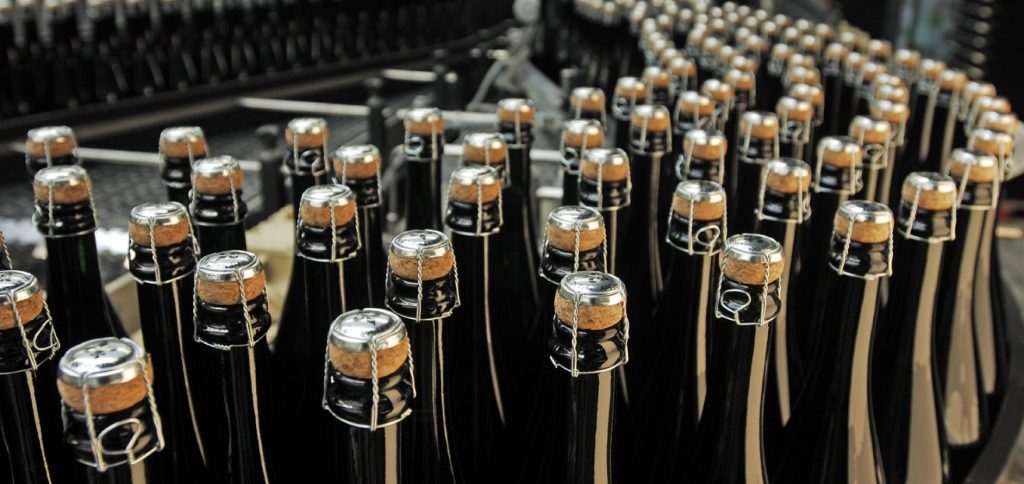Sparkling wine and champagne see increasing popularity

Whether it’s Champagne, Crémant, Prosecco, Asti Spumante or Cava from Spain’s Penedès region, one thing is certain: The market for sparkling wine is booming. More than two billion bottles of sparkling wine, the official name for the category, are sold worldwide each year.
Germany still leading the world in sparkling wine
In 2016, Germans drank an average of five bottles of sparkling wine (3.7 liters) per capita, making Germany the world’s leading consumer of the beverage. No other country drinks as much sparkling wine and champagne. France and Italy are some distance behind, but still in the running. British and American consumers, meanwhile, have also developed a taste for sparkling wine, where consumption has risen by 50 percent in the past ten years alone. Prosecco has become especially popular. But sparkling wines have also caught on in Asian countries, where they are enjoying increasing popularity among female customers in particular.
Champagne and sparkling wine: Why the country of origin matters
In Europe, not everything that bubbles is allowed to be called champagne, or as it is officially designated by law: quality sparkling wine. There are major differences between the individual product categories, starting with the origin of the base wines.
Different countries, different customs: While sparkling wines in Germany are primarily produced from wines from different countries in the European Union, countries such as France only recognize sparkling wines that are produced from wines in specific regions of origin: Champagne from Champagne and Crémant from the Burgundy, Alsace, Loire or Bordeaux regions, for instance. Italy also follows a similar concept with regard to origin – with its Franciacorta from Lombardy, Trento DOC wines from Trentino or Prosecco Spumante from Veneto.
Sparkling wine: It’s all about the method
Variations in sparkling wines are not all a result of their different origins or the base wines and grape varieties that are used. The production process plays an equally crucial role in naming conventions. Today, there are two different standard methods: traditional or classic bottle fermentation and the tank or Charmat method. The latter refers to the name of its inventor, Frenchman Eugène Charmat. Charmat is considered the inventor of the pressure tank that maintains the required pressure of six bars. There are also, of course, other methods for producing sparkling wine, such as the “méthode rurale,” through which the finished sparkling wine is produced by fermenting sweet grape must. Or the transvasement method, which involves the wine being fermented in bottles and then being filled into large pressure tanks for further processing. Continuous methods for sparkling wine production, such as those developed decades ago in Russia, are also used. Worldwide, however, traditional or classic bottle fermentation and tank fermentation methods are the most widely known and used.
Tradition bottle fermentation vs. tank fermentation
The starting product for sparkling wine production in both methods is fermented wine. Cellar masters refer to this as base wine or cuvée. Several wines are usually blended into one in order to achieve a flavor that remains consistent for years. Sparkling wines are brand products and should accordingly give consumers the same taste experience at all times.
To achieve the famous popping of the cork, the base wine is supplemented with a certain amount of carbonation. The carbonation is produced by a second alcoholic fermentation initiated by the addition of yeast and sugar to the base wine. When fermentation in the tightly sealed bottle or large pressure tank is completed after a few days or weeks, the wine begins to foam. The yeast then simply needs to be separated from the sparkling wine. In the bottle fermentation method, the yeast or sediment is shaken into the bottle neck, then shock frozen into a plug so that it can be removed without foaming the low-temperature wine. Cellar masters refer to this as disgorging.
The separation is somewhat easier with the tank fermentation method. Sparkling wine makers use pressure-resistant filters to separate the yeast from the wine. The result is the same either way: a crystal clear sparkling wine bursting with vibrant bubbles and sure to delight consumers.
drinktec will also be a sparkling event
Numerous exhibitors at SIMEI@drinktec will be offering solutions for the production of champagne, sparkling wine and many other sparkling products. From tank equipment to machines, filters, pumps and agitators, through to monitoring and control equipment, visitors will find everything the winemaker’s heart desires. Giro pallets from Lafal snc di Franchini streamline the effort and energy needed for the process of shaking the bottle to remove the yeast from the bottle neck. The Italian company FRACCHIOLLA, INDUSTRIE, S.P.A. offers all types of stainless steel tanks and tank systems, and Italian engineering company Bertolaso, Gruppo, S.p.A specializes in bottling sparkling wine, champagne and spumante.
